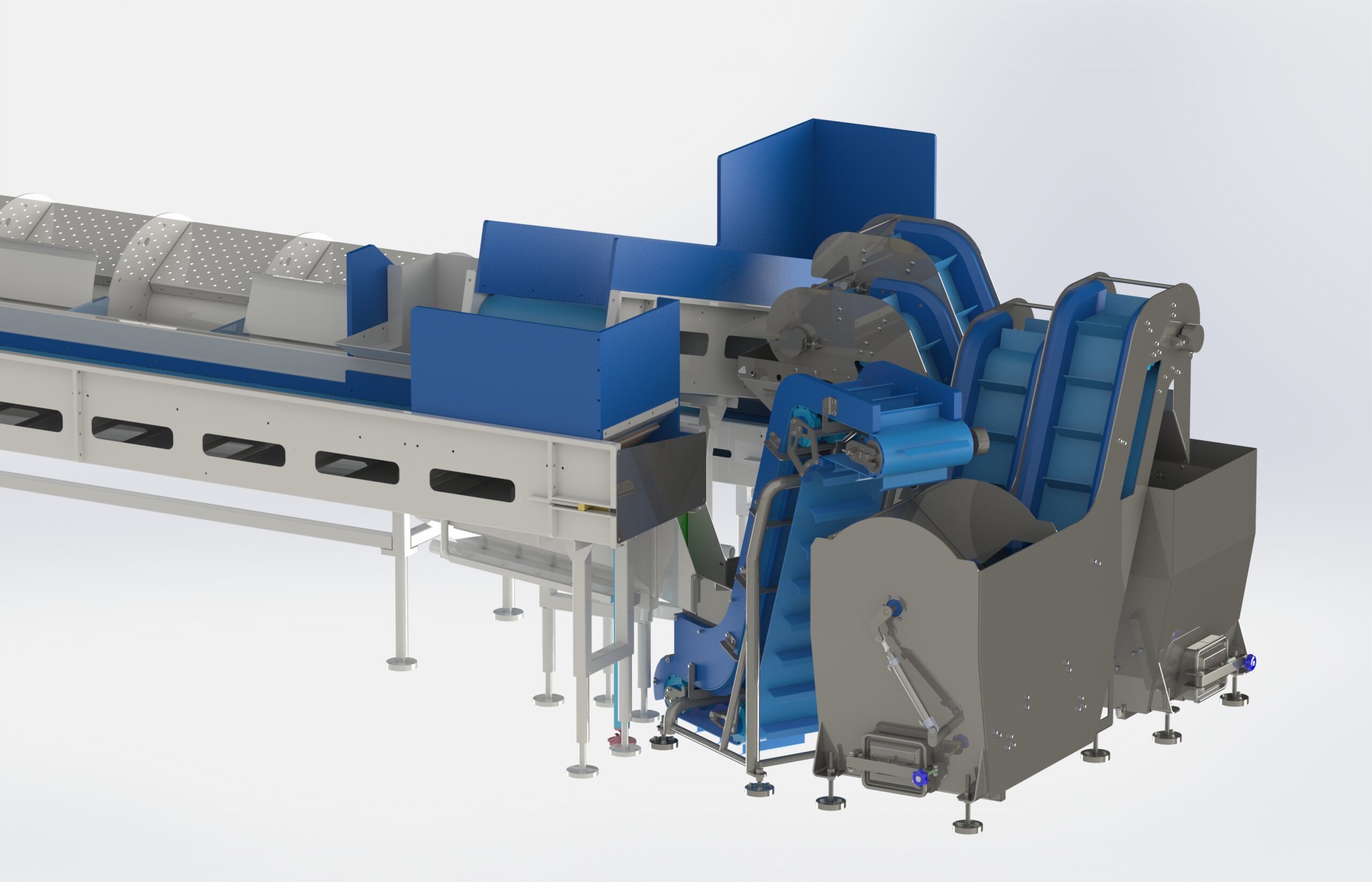It’s a story of innovation, teamwork, and the march of technological progress. The key players in this story are VCU Robotics and the team of VCU Tcd.
Transforming the langoustine conservation process
The COCO installation, a feat of engineering designed to completely transform the langoustine conservation process, is being installed with care and precision on the UK124. This fishing vessel is about to become a pioneer in the world of automated fishing. In the past, preserving langoustines was a labour-intensive process. Tough sailors wielded heavy baskets, manually dipping them into dip tanks full of preservatives, a ritual that required strength, patience and precision. But the arrival of the COCO installation promises a new era. With the CoCo, langoustines are now fully automatically preserved, cooled, and carefully transported to the hold of the UK124. A process that once required the effort of many hands can now be accomplished with the simple touch of a button.
The installation process went smoothly, thanks to the seamless collaboration between VCU Robotics engineers and the skilled VCU Tcd team. As the sun rises there is a sense of accomplishment and wonder among the crew. This is more than just a technological upgrade; it is a tribute to what is possible when people work together, pushing the boundaries of possibility and redefining the future of an age-old industry.
Even the oldest crafts have room for innovation.
The sea watches as the UK-124 prepares to set sail. With COCO on board, the vessel is more than just a fishing ship. It stands as a beacon of innovation, bridging the gap between tradition and technology. This project shows that even the oldest crafts have room for innovation and progress.

